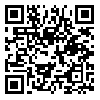Volume 7, Issue 4 (winter 2020 2020)
JRIA 2020, 7(4): 1-20 |
Back to browse issues page
Download citation:
BibTeX | RIS | EndNote | Medlars | ProCite | Reference Manager | RefWorks
Send citation to:



BibTeX | RIS | EndNote | Medlars | ProCite | Reference Manager | RefWorks
Send citation to:
Gholamian M, Yazdanfar S, Norouzian-Maleki S. (2020). An approach to shared infrastructure in Islamic-Iranian architecture (Evidence-based design for architecture façades of the Qajar period). JRIA. 7(4), 1-20.
URL: http://jria.iust.ac.ir/article-1-1247-en.html
URL: http://jria.iust.ac.ir/article-1-1247-en.html
1- School of Architecture and Environmental Design, Iran Univesity of Science & Technology
2- Faculty of Architecture and Urban Planning, Shahid Beheshti University
2- Faculty of Architecture and Urban Planning, Shahid Beheshti University
Abstract: (5911 Views)
The major change processes that have taken place in recent centuries, affect the facade and its elements. These changes have caused variations in the visual appearance of buildings. However, throughout the history of the late Qajar dynasty and the early years of the Pahlavi reign, different architectural styles have been developed and they were evolving as societies changed over the centuries. In the history of Iranian architecture, there has never been a break with the history of architecture. But in the last century, the alien elements entered into the Iranian-Islamic architecture and there has been a change in the principles of architecture. In the late Qajar period, the process has been discontinued and the structure of the façades as well as other architectural features were being modified. At the beginning of the Qajar era, the presence of Western symbols was also important in the facades. External factors contribute towards the indigenous architecture of a region to a great extent. Extracting patterns from different Islamic periods can be used in modern architecture. After the glorious era of Safavid architecture, the Qajar period is the interface between the past and the future architecture. The nature of the exodus of traditional Iranian architecture during this period were undoubtedly influenced by the Constitutional Movement. However, the dynamics of the modernization in the Pahlavi era brought about changes in Iranian society. This study seeks to compare the views of different eras in accordance with the principles of Islamic architecture. The methodological approach of the research is mixed (quantitative and qualitative). The study is based on an interpretative-historical research strategy using library information resources, field observations, and questionnaire survey data. In this regard, the study of architectural styles and practices of each period, the quantitative comparison of the fundamental characteristics and indicators of Islamic architecture in urban façades, and functional units in different categories are discussed. Depending on the theoretical framework of the current research, seven indicators of Islamic architecture were obtained. These indicators include geometry, proportion, symmetry, harmony, dynamics, order and rhythm, and unity in plurality. In the next step, three different buildings were chosen and made subject to a systematic inquiry. 42 students and 9 faculty members of architecture and planning were selected to study the characteristics of each building. After the pilot work was completed, the questionnaire was distributed to the respondents. Finally, the important attributes were determined in each building. Based on the findings, it is suggested that the change of architecture can be interpreted according to the intellectual architecture of its era. Therfore, only a physical change could not ultimately lead to a structural change in style.
Type of Study: Research |
Subject:
Subject- oriented researches in Islamic architecture and urbanism, eg. Spatial-geometrical ideas, symbols and ornaments
Received: 2020/04/24 | Accepted: 2020/04/24 | Published: 2020/04/24
Received: 2020/04/24 | Accepted: 2020/04/24 | Published: 2020/04/24
Send email to the article author
| Rights and permissions | |
 |
This work is licensed under a Creative Commons Attribution-NonCommercial 4.0 International License. |





